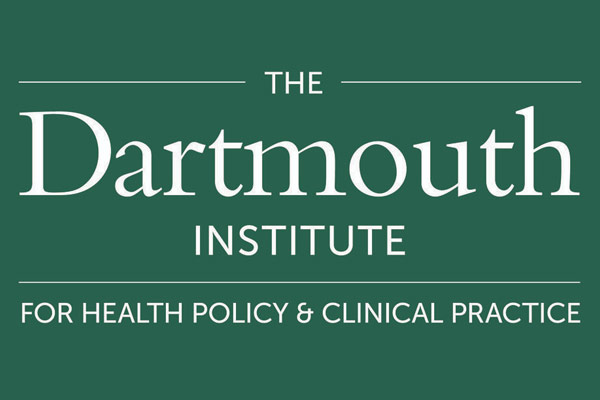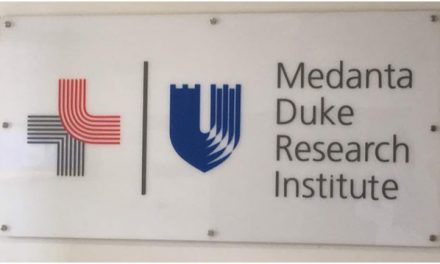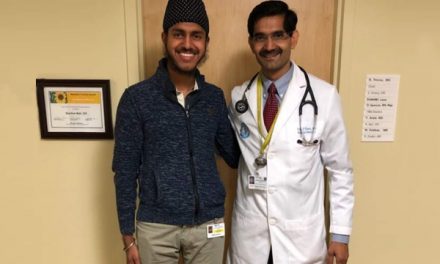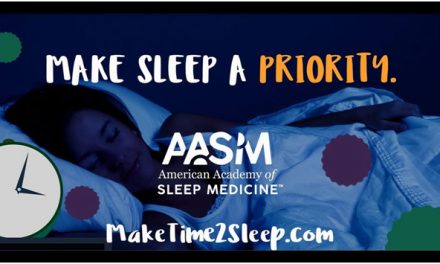Doctor’s Presentations
We had the pleasure of receiving a presentation from Dr. Tanski, a pediatrician, and Dr. Sparks, an orthopedic surgeon, who both work in the Dartmouth-Hitchcock Medical Center. They both shared information about themselves and their medical career, which I found fascinating.
Dr. Susanne Tanski
Dr. Tanski received her medical degree from the University of Connecticut and did her residency at the University of Rochester in New York in pediatrics. Pediatricians care for the physical, emotional, and social well being of children from their birth to early adulthood. They can be part of the primary care side of medicine (prevention/anticipation) plus almost every single specialty in adult medicine plus some specialties of their own including adolescent medicine, behavior and development, neonatology, child abuse pediatrics, and neurodevelopment. According to Dr. Tanski, some of the most important parts of her job are that pediatricians consider prevention primarily, have a public health focus and advocate for children who cannot vote. Pediatricians consider prevention primarily because their job is to keep children healthy since they mostly see children who are already healthy. They have a public health focus looking at the larger population and making a difference in that respect. Pediatricians were the ones who actually advocated for laws about making bicycle helmets mandatory as an effort to curb pediatric head trauma cases. Moreover, Dr. Tanski specifically pushed for requiring child-resistant packaging on nicotine vaping fluids to a congressional committee, and this actually became law. Another instance where a pediatrician did something important from a public health instance was when Dr. Mona Hanna-Attisha recognized that something was off when there was a spike in lead-poisoning rates in Flint, Michigan. Lead-poisoning makes it hard to learn because it causes neurodevelopmental problems in pediatric patients, affecting their behavior and lowering their IQ. With her research, she was the first to expose that there were excessive amounts of lead in the Flint water supply. Her findings were initially dismissed and discredited by state officials, but eventually, these officials relooked at their numbers and saw that there actually was a problem. Because of her work, the lid was blown off this story, and the problem was stopped before it could get any bigger. Lastly, the advocacy part of her job is to represent the needs of the percentage of the population who cannot vote. She regularly writes to Congress about children’s healthcare issues so that they can act on it. For example, when she thought that the Republican healthcare plan was not good from any angle to children, she wrote to senators and house representatives, telling them how it would negatively affect the youngest members of our population. Dr. Tanski is extremely inspirational because she cares so much about her patients and has the drive to get things done to help her patients, which is why I admire her as a doctor.
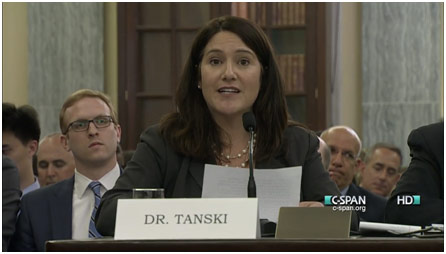
Dr. Tanski Testifying at a Congressional Hearing
Dr. Michael Sparks
Dr. Sparks received his medical degree from Baylor College of Medicine in Texas and did his residency at the Dartmouth-Hitchcock Medical Center in New Hampshire in orthopedic surgery. Orthopedics became big in the 20th century following outbreaks of polio that killed thousands and multiple large wars. Many of the people who survived the polio outbreaks along with those who came back from the war had musculoskeletal problems, which impacted orthopedics. For Dr. Sparks, his job is split into five main components: clinical work, research, administrative work, overseas work, and community work. One of the ones that I found most interesting was his overseas work in Haiti, which he regularly travels to in order to provide his services there. Dr. Sparks told us that Haiti is terrible in terms of health care since the access to proper healthcare is extremely limited. He would see mob scenes of parents bringing their kids to the hospital whenever a doctor from a foreign country came to help. In Haiti, he saw some of the most extreme cases that he had ever seen, noting that he would probably never see something of that caliber in the US. For example, he would see patients with osteosarcoma with huge tumors on their neck. Something that I thought was a pretty cool coincidence was that he sent the tissue through Partners in Health, which was what my first post was about, to pathology in Mass General because they did not have the resources to do so in Haiti. Another thing that Dr. Sparks was passionate about was the US’s national healthcare expenditures. He noted to us that while the US spends the most of any country on healthcare, its healthcare outcomes are not the best by any standard. He notes that right now we have volume-driven healthcare, but we should be transitioning it to be value-driven healthcare where quality is high and the cost is low. Another thing that Dr. Sparks is really interested in is using data compiled from past operation results to let patients see if treatments in the past have helped other people based on their race, age, etc. He actually worked with SAP to work on making some of the biggest patient data systems in the US at Dartmouth-Hitchcock. This way, he can more effectively tailor care to the needs of the patient rather than the needs of an x-ray. He gave us an example of this idea where an x-ray showed that the left-knee was more messed up than the right-knee, but the right-knee was replaced for the patient because that was the knee giving the patient symptoms and pain. Dr. Sparks was an extremely fascinating doctor who gave such great insight on matters relating to public health to improving patient’s quality of life by working with big tech companies. He does so much good with his time, helping people around the world, which is why he is such an inspiration to me in regards to the kind of doctor I want to be.
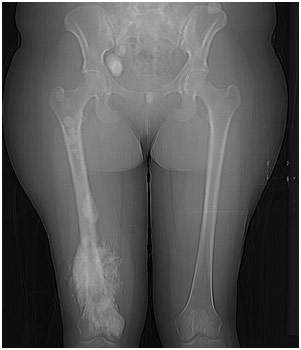
X-Ray of Femur Osteosarcoma
DHART
The Dartmouth-Hitchcock Advanced Response Team is a helicopter that can do emergency evacuations for medical purposes. The helicopter functions as a flying ICU with blood bags, a ventilator, and 50 different medications among other medical supplies. The standard crew that goes out on calls is made up of a nurse, a paramedic, and a pilot, and they usually carry one patient. They can also carry two patients (usually do not though), but they would only do so in a mass casualty incidence since they cannot provide care for the patients at that point. They can go 250 miles with a full tank, usually flying 3000-5000 ft. in the air. The helicopter can also land almost anywhere given a 75 ft. by 75 ft. landing area with 10% variation in the day. Often, the helicopter will be in contact with the ground crew, and an ambulance will bring the patient to the landing area to be transported through the helicopter. DHART can transport patients to “ANY appropriate medical facility in New England” according to their website, and they’ve responded to calls as far as New York. However, this all comes at a cost because the helicopter goes through 4-6 gallons of gas per minute and each gallon costs about five dollars. DHART generally charges $20,000 for a helicopter evacuation in the area, but insurance usually covers this cost. Some of the emergencies that DHART has responded to in the past have been car accidents, drowning incidents, train wrecks, and snowmobile accidents; however, DHART is used, most of the time, to transport patients from smaller rural hospitals without critical care facilities to larger ones with those facilities. When they do respond to large emergencies, the DHART team needs to decide which patient they can take, and at that point, they depend on triage, which is to do the most good for the most people in the shortest amount of time. We had the privilege of going inside the helicopter and exploring it, which was a once in a lifetime experience. Moreover, the DHART team had to respond to an actual emergency, so we were even able to see the helicopter take off.

DHART Helicopter
References
Gupta, Sanjay, et al. “Our Mouths Were Ajar’: Doctor’s Fight to Expose Flint’s Water Crisis.” CNN, 22 Jan. 2016, cnn.com/2016/01/21/health/flint-water-mona-hanna-attish/index.html. Accessed 15 Aug. 2017.
Metro Aviation. “DHART (Dartmouth-Hitchcock Advanced Response Team).” Dartmouth-Hitchcock, dartmouth-hitchcock.org/dhart.html. Accessed 15 Aug. 2017.
Susanne Tanski on the Risks of E-Cigarettes. 24 June 2014. Geisel NewsCenter, geiselmed.dartmouth.edu/news/2014/susanne-tanski-on-the-risks-of-e-cigarettes/. Accessed 15 Aug. 2017.

